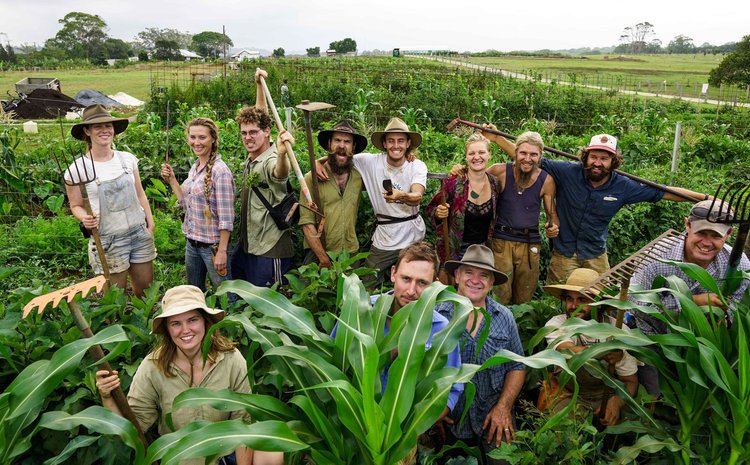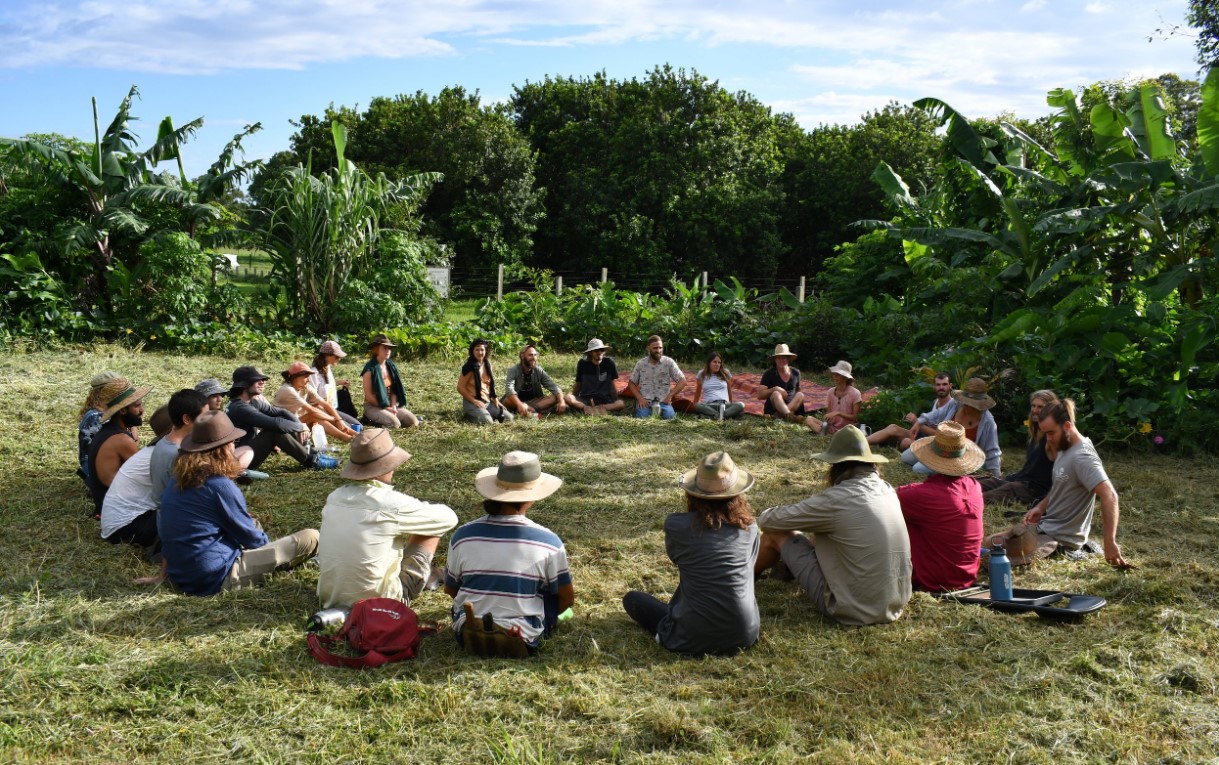As a nature-loving child growing up in the 2000s, I was debilitated and depressed by the idea that we could either save species and ecosystems, or provide a reasonable quality of life to human beings. Everything I was implicitly taught about ‘development’ and ‘progress’, at school and in the media, pointed to one seemingly inexorable and deeply disparaging fact: human wellbeing and ecological flourishing were mutually exclusive goals.
But when, at age 15, I got involved in the movement for local food and local economies, I encountered projects that thoroughly relieved me of this pervasive – and profoundly false – idea.
Economic localisation, which means shrinking the distances between producer and consumer of our basic needs, can drastically reduce resource and energy use, while redistributing economic power from big corporations to many smaller businesses – businesses that are far more accountable to democratic laws and to the communities they serve.
Economic localisation is therefore a crucial strategy for rapid transition – not only to more sustainable economic systems, but equally to economic systems that foster justice, peace and joy.
When it comes to of our most primary need – food – shortening distances has a clear ‘solution-multiplier’ effect:
- Firstly, environmentally: Local farms connected to local markets diversify their production, which means raising many kinds of plants and animals together, rather than growing vast monocultures for export. Not only does this bring back biodiversity, rebuild soil, sequester carbon and slash the use of toxic chemicals, but it also produces far more food per acre.
- Secondly, economically: Local food economies keep wealth circulating locally, rather than allowing it to leak out to multinationals. Adjusted for market share, localised farms, local food outlets and distribution systems also provide approximately three times as many jobs as the globalised food economy.
- And, finally, socially: Through reviving farmers’ markets and revitalising land-based cultures, localising food reweaves the connections between people, and between people and nature. Studies have shown people tend to have ten times more conversations at farmers’ markets than supermarkets.
Living Agroecology, located in the Byron Shire of eastern Australia, is an impressive example of this solution-multiplier effect. On a 2-acre patch of previously degraded dairy farmland, in a colonised landscape where indigenous food systems were assaulted and replaced by extractive industries, a group of passionate and wise-beyond-their-years young people have developed a unique form of agroecology.

Inspired by myriad techniques from different parts of the world, they have sowed the seeds of over 100 different plant species, and provided habitat for insects and rare wild birds. They have, through trial and error and close observation of the land, developed a fully organic agricultural technique that blends market gardening with agroforestry, and endangered native rainforest species with food crops.
They also tell heart-warming stories about how they have built community and watched people bond on the farm. For example, when they had a bumper harvest of casava, a crop virtually unknown in the average Australian supermarket, they shared the bounty with Pacific Islander immigrant communities, who celebrated with cook-ups of traditional recipes and said they felt more at home on Australian soil because of it.
The supermarket system could never allow for this. Working with local outlets – restaurants and a community-supported box scheme – gave the Living Agroecology crew a chance to experiment. The menus adapt to the farmers’ needs, to the land’s needs, and to the local climate, rather than the other way around.
The result is remarkable. Travelling through the region, the trained eye can begin to identify this new form of agroecology gaining ground – supported by the region’s farmers’ markets and its broader local food movement. Plot by plot, farm by farm, it’s regenerating the soil, sequestering carbon, and strengthening not only the region’s food security, but also its community and its unique identity.
By building the local food economy and adapting to place, nothing less than a new indigenous foodway is emerging. I am watching rapid transition take place before my eyes – and it’s beautiful.

Local food initiatives of this kind are happening all across the world. The organisation I work with, Local Futures, estimates they number over half a million. But, in a world where global agribusinesses are benefiting from lavish subsidies, tax breaks and regulations that favour big over small, these projects often struggle to keep their heads above water. The fact that they keep on emerging – like tomato plants in the cracks of the concrete – is, in the words of localisation pioneer Helena Norberg-Hodge, “testament to the goodwill, commitment and perseverance of ordinary people”.
But the key to the long-term survival – and rapid multiplication – of these grassroots projects is to reshape the market. Attention must be paid to changing the economy itself; redirecting supports for large-scale, export-oriented food systems towards local food first. This is the key transferrable principle that can strengthen local food projects, everywhere.
In Andhra Pradesh in central India, for example, women farmers have created an alternative ‘public distribution system’ for their traditional grains, through an initiative called the Deccan Development Society (DDS). With initial investment from an NGO, an alternative system for purchasing, storing, and distributing local grains to food-insecure people was set up. It started in 31 different villages, and soon expanded to about 75. It is replacing the state-supported public distribution system, which has traditionally favoured bigger, monocultural rice and wheat farms with expensive and unsustainable chemical inputs.
Across the region where the DDS works, yields have increased even in drought years, while the use of synthetic fertilisers and pesticides was cut. About 80 different kinds of millet, pulses, rice and sorghum were brought back from the brink of local extinction, offering a significant boost to nutrition and food security.
Meaningful employment was also generated – not only in crop farming, but in handicrafts, building and animal husbandry – increasing average household income by around 20%, and boosting the economy of the entire region.
Rates of outward migration to cities – in large part the result of globalising economic policy – were lessened, and in some cases even reversed. This, in turn, bolstered social connection and reconnected the intergenerational linkages that are the cornerstone of cultural survival.
Meanwhile, the women of the Deccan Development Society started a local radio station, and even begun their own community school. Their empowerment began to transform entrenched gender and class/caste inequalities.
Similar examples – where people have shifted market supports to favour local over global – have taken off in other parts of India, as well as across the globe. Near Hoi An in Vietnam, villagers have supported their traditional food systems by training university educators and tour guides in agriculture. They challenge the pervasive colonial idea that traditional agriculture is backwards, sharing instead the joy and wisdom inherent in land-based living.
Their project, ‘Community by Tourism’, brings tourist groups and around 300 university students every year into the fields, where they can witness the benefits of small farming and get a taste of the profound emotional and spiritual benefits of reconnecting the soil and community.
Wherever they are operating, such initiatives are charting paths out of dependence on fossil fuels and global corporations, and into sustainable livelihoods in systems that nurture diversity, autonomy, resilience, community, and genuine sustainability.
The beauty of these systems is that they look radically different from place to place. But each community can learn from these examples to implement the fundamental principles of localisation and replicate their systemic ‘solution-multiplier’ effect – for the sake of people and the planet.
